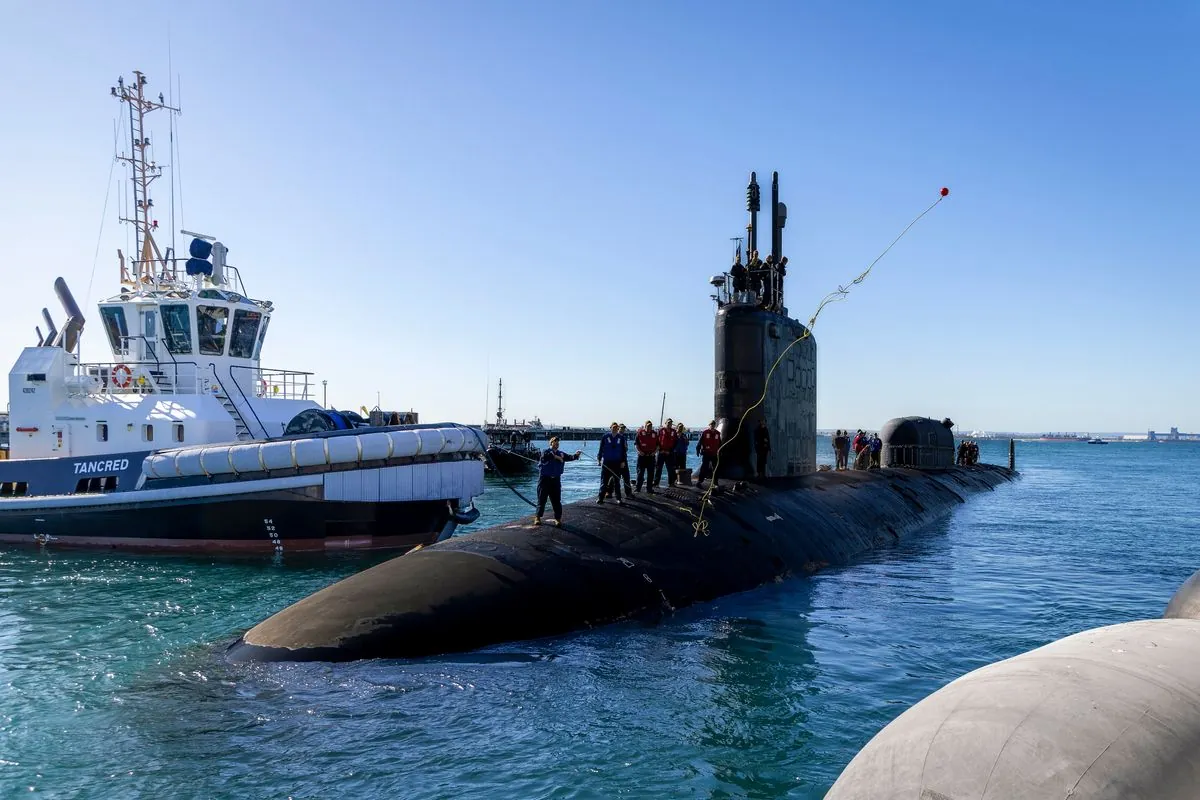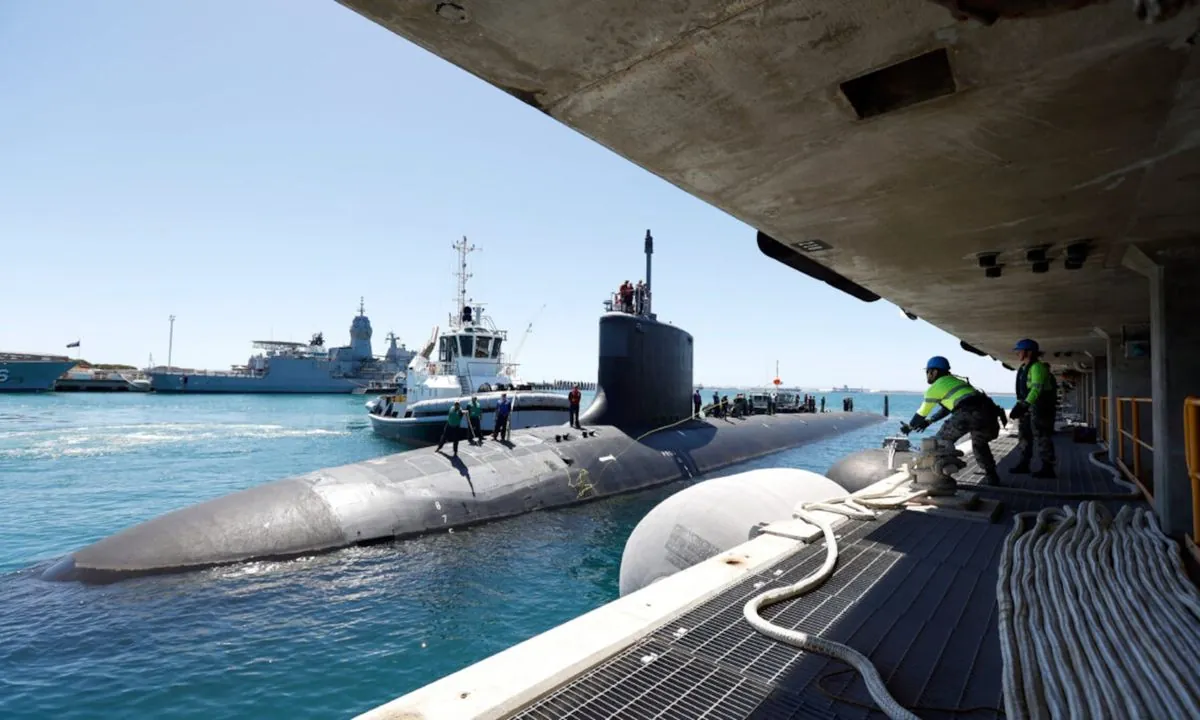US Nuclear Sub Maintenance in Australia Marks AUKUS Milestone
A US nuclear submarine will undergo maintenance in Australia for the first time, strengthening AUKUS partnership. This move aims to enhance deterrence in the Indo-Pacific region and uphold international order.

In a significant development for the AUKUS partnership, a U.S. nuclear-powered submarine is set to undergo maintenance in Australia for the first time on August 23, 2024. This event marks a crucial step in the trilateral security pact between Australia, the United Kingdom, and the United States, which was established on September 15, 2021.
The maintenance will take place at HMAS Stirling, the Royal Australian Navy's primary base on the west coast of Australia. This facility will play a pivotal role in hosting a rotational presence of one British Astute-class and up to four U.S. Virginia-class submarines starting from 2027. The Virginia-class submarine, known for its advanced cruise missile capabilities and nuclear propulsion, allows for extended underwater operations, enhancing stealth capabilities.

To prepare for this milestone, Australian personnel have undergone extensive training with their U.S. and UK counterparts over the past year. The defense ministers of the three nations emphasized their commitment to maintaining the highest nuclear non-proliferation standards while developing Australia's conventionally-armed, nuclear-powered submarine capability.
Addressing concerns about nuclear waste management, a critical issue for countries operating nuclear-powered vessels, the Australian defense department assured that no radiological material would be transferred ashore during the maintenance procedures. This commitment aligns with Australia's current lack of a nuclear power industry and the need for careful handling of nuclear-related activities.
The AUKUS partners have recently reduced defense export controls between their countries, removing a potential obstacle to the maintenance task. This adjustment in regulations governing the export of defense and military-related technologies facilitates smoother cooperation among the three nations.
Looking ahead, Australia plans to acquire U.S. nuclear-powered attack submarines and jointly develop a new class of conventionally armed, nuclear-powered submarines with Britain and the United States over the next two decades. This long-term strategy aims to build Australia's experience in operating a fleet of nuclear-powered submarines by the next decade.
The strategic importance of this development extends beyond the immediate partners. Michael McCaul, chair of the U.S. House Foreign Affairs Committee, highlighted the significance of U.S. submarine rotations through Australia in boosting deterrence in the Indo-Pacific region. This move comes at a time when China has been exerting pressure on the Philippines in the disputed South China Sea, a marginal sea of the Western Pacific Ocean covering approximately 3.5 million square kilometers.
The defense ministers of the AUKUS nations emphasized that this initiative is designed to "better deter aggression in the region and uphold the rules-based international order." This concept, established after World War II, refers to the system of international norms and institutions that govern global interactions.
As the Indo-Pacific continues to gain geopolitical prominence, the AUKUS partnership's efforts to enhance submarine capabilities and maintain a strong naval presence underscore the region's strategic importance in global security dynamics.


































